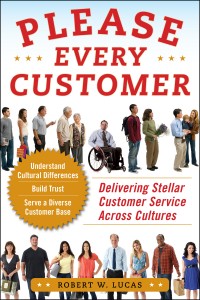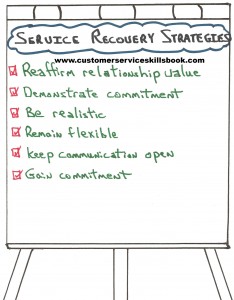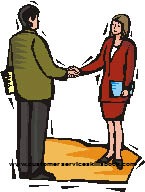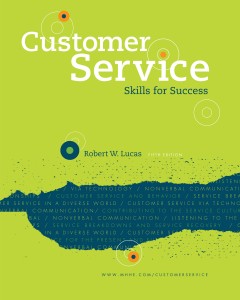Three Tips for Developing Customer and Brand Loyalty
Companies and customer service representatives are always looking for ways to develop a service culture that can increase customer and brand loyalty in today’s global competitive business environment. By exhibiting basic customer service skills and delivering excellent customer service with each customer-provider encounter, the chances that a customer will return and stay loyal are increased significantly.
Here are three simple strategies that can contribute to higher customer and brand loyalty in your organization.
- Always act in the best interest of your customers. Listen to them, ask questions, anticipate their needs, deliver what you promise and exhibit high levels of professionalism in everything that you do whether your customers are present or not.
- Take the time to personalize your customer interactions and to make each customer feel special. Use a customer’s name often during an interaction, listen, smile, ask questions to show interest and strive to project a positive image. This can all lead to enhanced trust and helps ensure that the customer returns.
- Treat all customers as if they are crucial to the organization—they are! Do whatever is possible and reasonable to maintain a strong customer-provider relationship and keep the customer returning and recommending that others should do likewise. Whether someone is a new or existing customer should make no difference.
For additional ideas on developing customer and brand loyalty and on how to deliver effective customer service to your customers, get a copy of Customer Service: Skills for Success and Please Every Customer: Delivering Stellar Customer Service Across Cultures by Robert W. Lucas.
About Robert C. Lucas
Bob Lucas has been a trainer, presenter, customer service expert, and adult educator for over four decades. He has written hundreds of articles on training, writing, self-publishing, and workplace learning skills and issues. He is also an award-winning author who has written thirty-seven books on topics such as, writing, relationships, customer service, brain-based learning, and creative training strategies, interpersonal communication, diversity, and supervisory skills. Additionally, he has contributed articles, chapters, and activities to eighteen compilation books. Bob retired from the U.S. Marine Corps in 1991 after twenty-two years of active and reserve service.
Make Money Writing Books: Proven Profit Making Strategies for Authors by Robert W. Lucas at Amazon.com.
The key to successfully making money as an author and/or self-publisher is to brand yourself and your company and to make yourself and your book(s) a household name. Part of this is face-to-face interaction with people at trade shows, library events, book readings, book store signings, blogging or guest blogging on a topic related to their book(s). Another strategy involves writing articles and other materials that show up online and are found when people search for a given topic related to a topic about which the author has written.
If you need help building an author platform, branding yourself and your book(s) or generating recognition for what you do, Make Money Writing Books will help. Bob’s popular book addresses a multitude of ideas and strategies that you can use to help sell more books and create residual and passive income streams. The tips outlined in the book are focused to help authors but apply to virtually any professional trying to increase personal and product recognition and visibility.







 By that I mean that had they just taken a second to think before acting (or failing to act) related to serving their customers, they would not have needed to try to provide a service recovery strategy that might salvage their mistake. What was happening in each of my encounters is really not as important as the fact that on any given day in virtually any type of organization, there is a service provider who is improperly trained, has a poor service attitude or is inhibited from providing good service because they do not have adequate supervisory or organizational support. The result is that customers are disappointed and go away and ultimately negative word-of-mouth publicity follows an organization suffers.
By that I mean that had they just taken a second to think before acting (or failing to act) related to serving their customers, they would not have needed to try to provide a service recovery strategy that might salvage their mistake. What was happening in each of my encounters is really not as important as the fact that on any given day in virtually any type of organization, there is a service provider who is improperly trained, has a poor service attitude or is inhibited from providing good service because they do not have adequate supervisory or organizational support. The result is that customers are disappointed and go away and ultimately negative word-of-mouth publicity follows an organization suffers.
